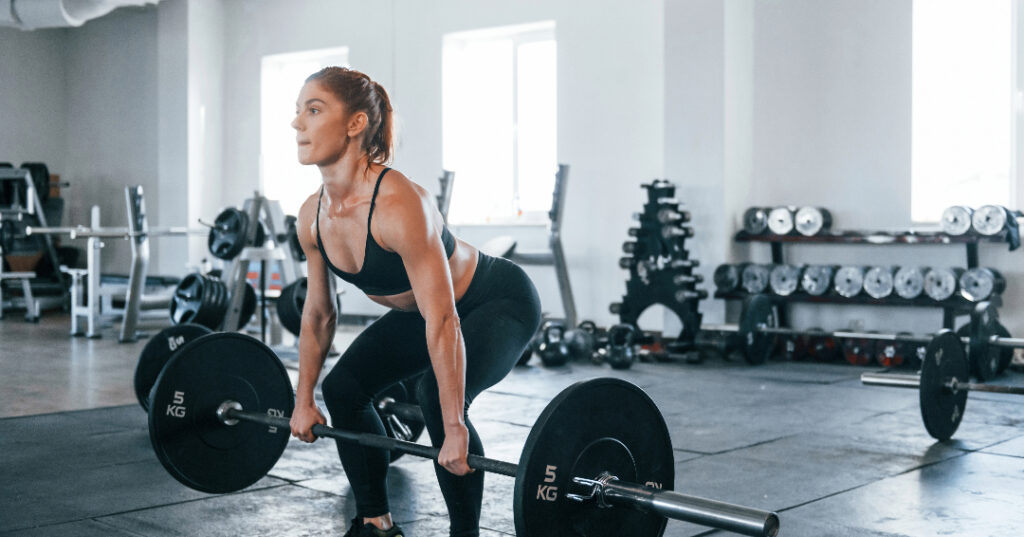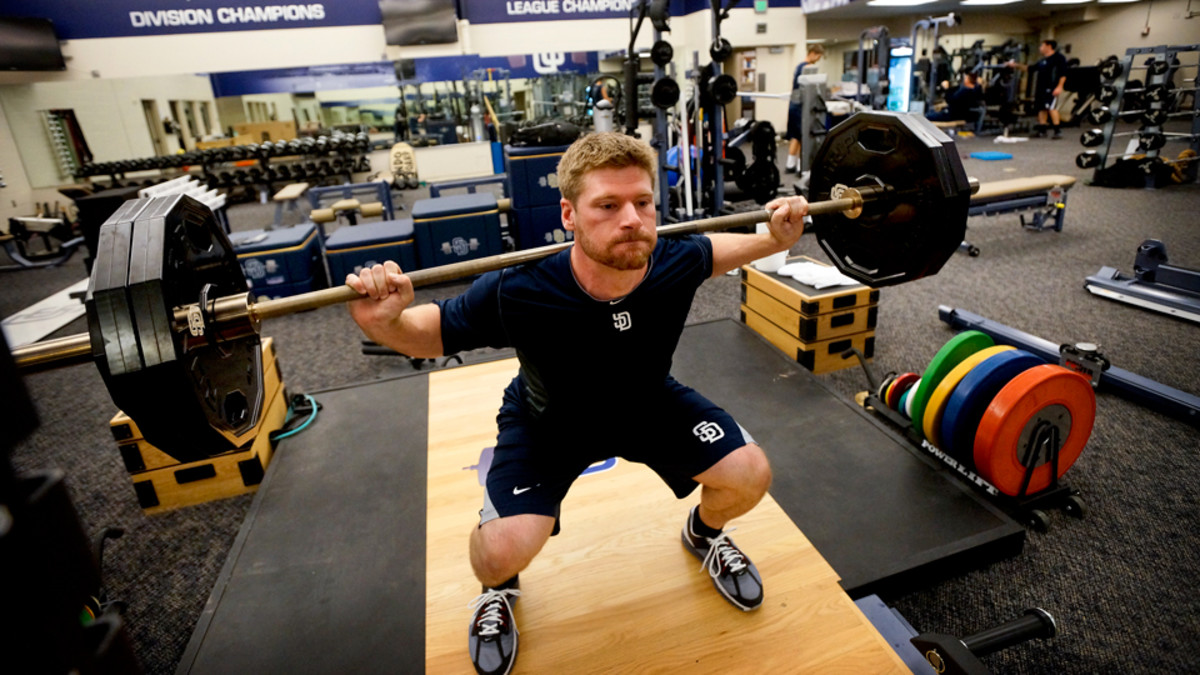Exercise Daily – Weightlifting is a powerful tool for improving strength, building muscle, and enhancing overall health. However, as with any physical activity, the key to reaping the benefits lies in performing the exercises safely. Improper techniques can result in serious injuries that may hinder your progress. This comprehensive guide covers eBest Practices for Safe Weightlifting to ensure that you lift safely and efficiently, minimizing risks while maximizing results.
Safe weightlifting is essential for athletes to optimize performance while minimizing the risk of injury. Best practices begin with proper warm-ups, including dynamic stretches and light cardio, to prepare muscles and joints for the stress of lifting. Athletes should prioritize form over weight, ensuring correct technique through professional guidance or coaching to avoid undue strain on muscles, joints, and ligaments. Gradual progression in weight and intensity helps build strength safely, preventing overtraining and injury.
Proper equipment, such as weightlifting belts and shoes, provides stability and support. Adequate hydration, nutrition, and rest are critical to facilitate muscle recovery and growth. Lastly, incorporating balanced training that targets all major muscle groups ensures overall strength and reduces imbalances that could lead to injury.
Introduction to Weightlifting
Weightlifting, also known as resistance training or strength training, involves using various forms of resistance to enhance muscle strength, endurance, and overall fitness. Whether you’re lifting free weights like dumbbells and barbells or using weight machines, the primary goal is to challenge your muscles, prompting them to grow stronger.
For beginners and seasoned athletes alike, proper technique is crucial for preventing injuries and optimizing performance. This guide will help you master weightlifting fundamentals, covering everything from proper form to injury prevention.
What is Weightlifting?
Weightlifting is an exercise routine that utilizes weights as resistance to improve muscle strength and mass. It targets specific muscle groups by applying controlled force to overcome the weight. Whether you use dumbbells, barbells, or other resistance machines, weightlifting plays a vital role in improving muscle tone, enhancing bone density, and boosting overall health.
Incorporating weightlifting into your fitness regimen offers many benefits, but the practice requires patience and dedication to achieve sustainable results while avoiding unnecessary risks.

Benefits of Weightlifting
Weightlifting offers a range of health benefits that extend beyond just muscle building. Regular weight training can improve your cardiovascular health, boost metabolism, and contribute to better mental well-being. Here are some significant benefits:
Why Should You Lift Weights?
- Muscle Building: The primary benefit of weightlifting is building muscle mass. The more muscle you have, the higher your metabolic rate becomes, helping you burn more calories even at rest.
- Bone Density: Weight training is essential for enhancing bone health. It stimulates bone formation and helps prevent conditions like osteoporosis.
- Strength and Endurance: Weightlifting improves both strength and muscular endurance, which is beneficial not only in the gym but also in everyday activities.
- Mental Health: The psychological benefits of weightlifting cannot be overstated. Strength training has been linked to reduced anxiety, depression, and improved mood.
- Improved Posture and Balance: Regular weightlifting strengthens core muscles, leading to better posture and stability, which can help in preventing falls, especially in older adults.
- Functional Fitness: Weightlifting improves functional strength, making it easier to perform daily tasks such as lifting groceries, carrying objects, or performing household chores.
Getting Started with Weight Training
For beginners, weightlifting might seem intimidating. However, with the right approach, it can become an exciting and rewarding part of your fitness journey. Here’s a guide to help you get started safely:
Choose the Right Weights
Selecting the appropriate weight for your workout is crucial, especially when you’re new to weightlifting. You want to pick weights that challenge your muscles without compromising your form. A good rule of thumb is to choose weights that allow you to complete your sets with effort, but not to the point where you sacrifice technique.
- Beginners: Start with lighter weights and focus on mastering your form before progressively increasing the load. This will help you avoid injury and develop good lifting habits.
- Advanced Lifters: As you become more experienced, you can gradually increase your weight. However, always ensure that your form remains intact even as the weights become heavier.
Warm-up and Stretching
Before diving into weightlifting, it’s essential to properly warm up your muscles and joints. A proper warm-up increases blood flow prepares your muscles for exertion, and reduces the risk of injury. Spend 5-10 minutes doing light aerobic exercises like brisk walking, cycling, or jumping jacks to elevate your heart rate.
After that, perform dynamic stretches (like leg swings and arm circles) to improve your range of motion. Warming up properly prepares both your body and mind for the workout ahead.
Importance of Proper Technique
Proper form is the foundation of safe and effective weightlifting. Correct posture and technique not only protect your body but also ensure that you’re targeting the right muscle groups.
Understanding Proper Form
Maintaining proper posture during weightlifting is critical. For most exercises, follow these basic principles:
- Feet: Keep your feet shoulder-width apart, ensuring a stable base for lifting.
- Back: Your back should be straight (not rounded) during exercises. A neutral spine supports safe movement patterns.
- Core: Engage your core throughout each movement. This provides support for your lower back and helps you lift with control.
Common Mistakes to Avoid
Many weightlifters, especially beginners, make common mistakes that can lead to injuries. Below are some of the most frequent errors:
Rounded Back
A rounded back, especially during heavy lifts like deadlifts and squats, puts immense strain on your spine. This can lead to serious back injuries over time. Always ensure that your back remains neutral and your core is engaged.
Overextending
Hyper-extending or overreaching during exercises can strain your tendons and ligaments. Ensure that your range of motion stays within a safe and controlled limit. For example, avoid locking your knees during squats or deadlifts, and never extend your arms too far during bench presses.

Safety Tips for Weight Training
Weightlifting can be an incredibly safe and effective workout method if you follow a few key safety principles. Keeping these tips in mind will reduce your chances of injury and enhance your performance.
Don’t Lift Too Heavy Too Soon
Starting with excessively heavy weights is a common mistake that can lead to overexertion and injury. Instead, focus on mastering your form with moderate weights before progressively increasing the load. Remember, proper technique is always more important than the amount of weight you’re lifting.
Don’t Use Momentum
Avoid using momentum to lift weights. Using momentum (such as swinging the weight or jerking the body) takes away from muscle engagement and can increase the risk of injury. Instead, lift the weight in a slow, controlled motion to fully activate the muscle groups you’re targeting.
Don’t Hold Your Breath
Breathing is crucial when weightlifting. Holding your breath while lifting can raise your intra-abdominal pressure and may lead to dizziness, fainting, or a sudden loss of control. Exhale as you lift the weight and inhale as you lower it. This helps maintain healthy blood flow and oxygen levels.
Understanding Risk and Injury Prevention
Weightlifting, while incredibly effective, does come with a certain level of risk. However, most injuries are preventable by following proper techniques and listening to your body.
Listen to Your Body
Your body gives you valuable signals when something isn’t right. If you feel pain (sharp or sudden discomfort) during any lift, stop immediately. Pushing through pain can lead to serious injuries. Respect your body’s limits and make adjustments when necessary. Remember, no workout is worth an injury.
Avoiding Back Pain and Strain
Back pain is one of the most common injuries among weightlifters. To prevent back pain, always ensure that your spine is in a neutral position, particularly during exercises like deadlifts, squats, and overhead presses. Engage your core to stabilize your back, and be mindful of your lifting form.
Take Adequate Rest
Rest and recovery are just as important as the workouts themselves. Overtraining without proper rest can lead to overuse injuries and decreased performance. Muscles grow and repair during rest, so be sure to schedule rest days between workouts targeting the same muscle groups. A proper recovery regimen enhances muscle development and prevents burnout.

Conclusion
Weightlifting is an incredibly effective way to improve strength, build muscle, and enhance overall fitness. However, it’s vital to approach weightlifting with care and focus. By using the proper techniques, lifting appropriate weights, and listening to your body, you can minimize the risk of injury while maximizing your results. Whether you’re a beginner or an experienced lifter, incorporating safe weightlifting practices will help you achieve your fitness goals and maintain long-term health.
FAQs – Best Practices for Safe Weightlifting
Q: How much weight should I start lifting as a beginner?
A: Start with lighter weights that allow you to perform exercises with proper form. Gradually increase the weight as you get stronger, but always prioritize technique over lifting heavier weights.
Q: How can I avoid back pain when weightlifting?
A: To prevent back pain, always maintain a neutral spine and engage your core. Avoid lifting excessively heavy weights, and ensure you use proper form, particularly during exercises like deadlifts and squats.
Q: Is it safe to lift weights every day?
A: Lifting weights every day without adequate rest can lead to overtraining and increased risk of injury. It’s essential to allow at least 48 hours between workouts targeting the same muscle group for recovery.
Q: Should I use a personal trainer for weightlifting?
A: If you’re new to weightlifting, a personal trainer can help teach you the correct form and technique. They can create a customized program tailored to your goals and ensure you’re lifting safely.
Q: What are the best exercises for strength training?
A: Some of the best strength training exercises include squats, deadlifts, bench presses, rows, and overhead presses. These compound movements engage multiple muscle groups, making them effective for building overall strength.




